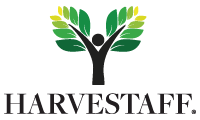Guidelines for Managing Farm Workers
Farmers and those considering farming typically prioritize needs like land, capital, breeds, disease control, vaccinations, and farm structures. On the other hand, studies and practical application show that the human resource, the most valuable and important resource, is often overlooked. Owners of large farms can no longer rely solely on relatives to fill in the gaps in their workforce, whether at the unskilled, semiskilled, or skilled levels. In a flash, you'll have a staff of 10, and as the years pass, that number will only grow.
It's not enough to just hire the right people to work on the farm; you also need to know how to manage them well. Knowing how to effectively manage these workers can mean the difference between a thriving and a failing farm. Some of the knowledge, experience, and methods you'll need to manage your farm's staff effectively are as follows:
Contracts should be put in writing if at all possible
The employee's native tongue can be used to draft these documents. To best reach the semi- and unskilled labor force, this should be translated into their native tongue. The potential for future tension is reduced.
Specific roles and responsibilities for everyone
When working with a team, it's important for everyone to understand their part and what they're responsible for doing. A thorough accounting of how each person is carrying out their responsibilities is facilitated by this method.
Create a hierarchical system on the farm
Instead of everyone on the farm knowing the boss's number, only one person should be responsible for making calls, reporting, and sending messages.
Awareness of the latest events
Workers must keep up with developments in their local area, region, nation, and the world at large. Nobody wants to keep workers on the payroll who are in the dark about important things like the status of Covid-19 issues, the local voting process, and other relevant details. It's possible that a radio could serve this function.
Instill confidence in them by teaching them the ropes and giving them a taste of farm life
New hires, in particular, should be given an orientation to the farm's procedures and cultural basics as soon as possible after they've arrived on the job.
Get everyone on board with the company's vision and make sure they're all moving in the same direction.
To ensure that everyone on the farm is working toward the same goals, everyone should be informed of the long-term plans for the farm's growth over the next year, two years, and five years.
Setting work hours, working hours, and rest breaks
Workers should be allowed both breaks and time to complete assigned tasks. Don't treat them like automatons, operating nonstop without breaks.
Employees are not your children or your assets, so it's normal and healthy to have some turnover. Kids eventually grow up and move out of their parents' homes and properties. Despite the fact that retaining them through effective management is the ultimate goal, at some point they will leave and new ones will come in. The most important factors are the employee's time spent at the company, their interactions with coworkers, the value of their contributions, and the quality of their working relationship with management. This means that a turnover rate of less than 10% is acceptable and even desirable.
